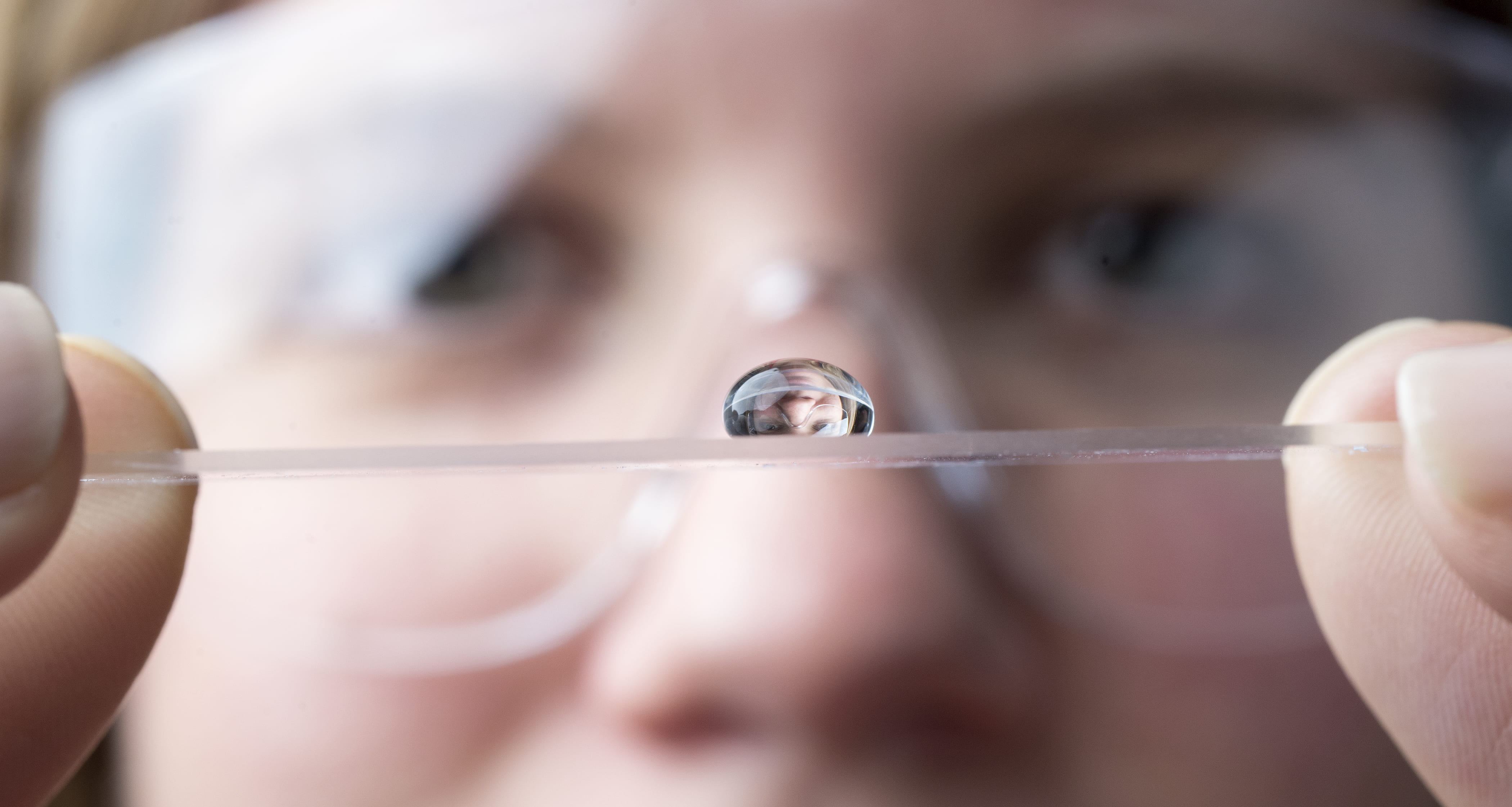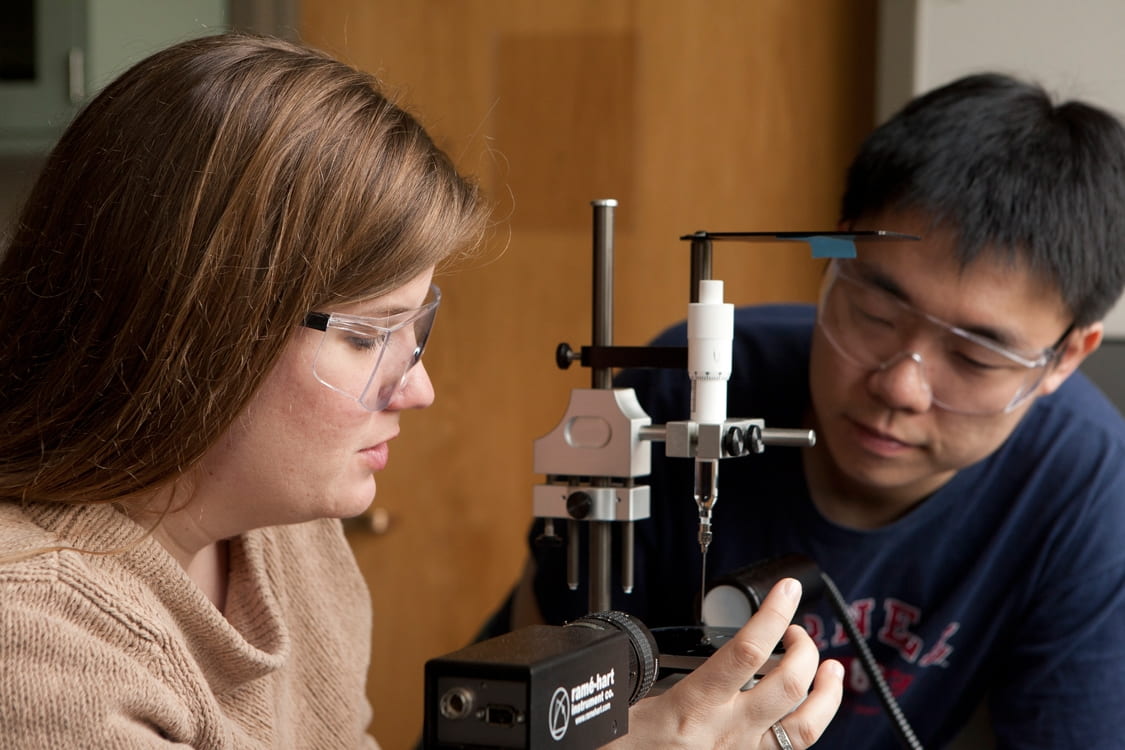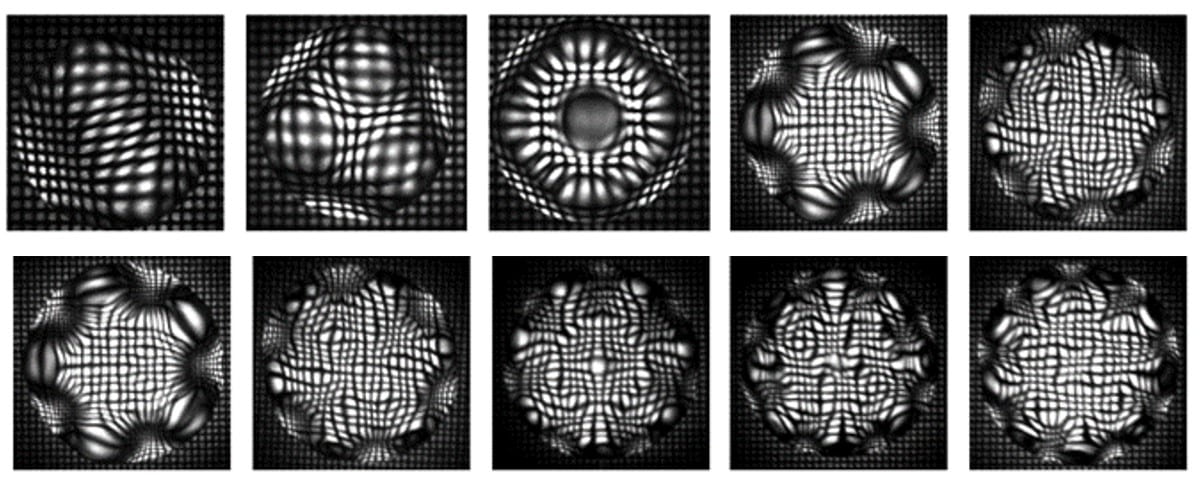
Interfacial Engineering and Wetting

The Daniel Lab investigates the impact of the organization of molecules at a surface on the interface between materials and the dynamic phenomena that result from these interactions. We do this to understand how biological interfaces and chemically patterned surfaces interact with soft matter, liquids, polymers; and biological materials, such as cells, viruses, proteins, and lipids.
Background: Methodologies

Droplets and droplets in contact with surfaces are ubiquitous. Rain on a window, spray paint, ink-jet printing, all rely on the interaction of the liquid with the surface to determine how far drops can spread out. Controlling these important interactions means having clean windshields, uniformly coated surfaces, and high resolution printing. Another place were controlling droplet interactions and motions on surfaces is critical is in carrying out microreactions on chip. An alternative to conventional continuous flow microfluidics is digital, or droplet-based fluidics. Miniaturizing batch processes into droplets poses advantages for applications including protein folding, crytallization, and the manufacture of scarce products. But moving sessile droplets on surfaces, especially aqueous solutions, is a challenge because of contact angle hysteresis. Our group has innovated strategies to overcome this force through surface patterning and droplet vibration.
The Daniel Lab Innovations
In our unique approach, the Daniel Lab uses surface patterning techniques, vibration, and imaging tools to study the shape deformations which occur in the drops. These deformations can overcome hysteresis forces which leads to controllable drop motion on surfaces. In the images below, we show microliter sized drops undergoing various resonance mode shapes when placed on a chemically patterned glass slide. The shapes are visible because a tiny mesh screen is taped beneath the glass slide and illuminated by a bright light source. The drops create a lens effect that is captured using a high speed camera, enabling us to study their characteristics and dynamic responses.

What the Daniel Lab is Working On Now
The Daniel Lab is currently funded by a joint NSF/NASA grant with the Steen group to send experiments to the space station in 2020 to examine how drops coalesce in microgravity. In space, surface tension forces dominate liquid interactions. By understanding coalescence in space, condensation and other processes can be better designed for low gravity environments. Also, because the effect of gravity is nearly negligible, we can study coalescence at scales much larger than on Earth. The insight gained at this more convenient scale will also allow us to understand the fundamental processes better for applications that occur on Earth too.